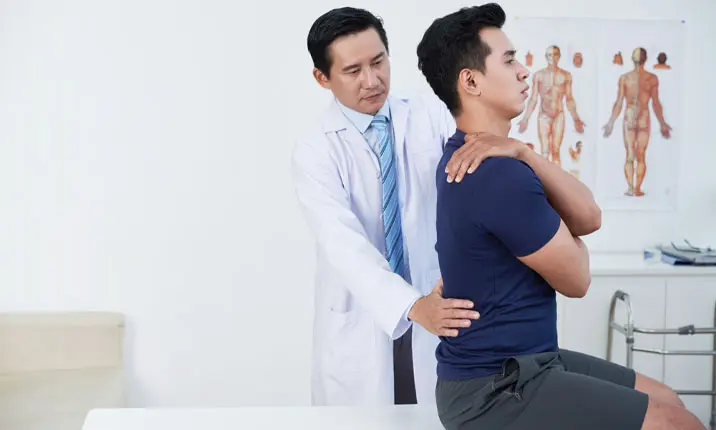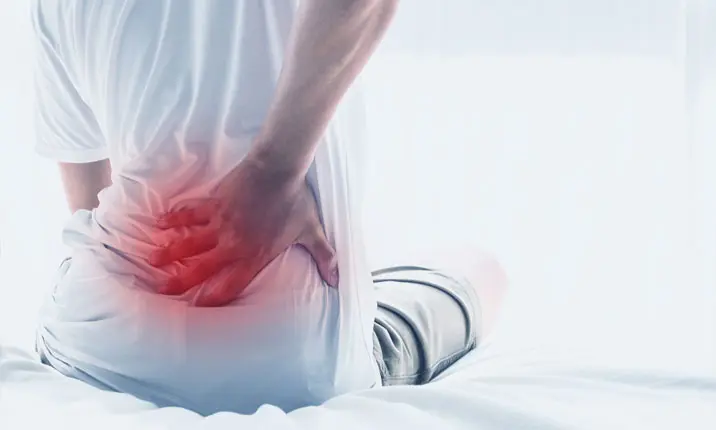Spinal stenosis
Spinal stenosis, or a reduction of space in the spinal canal that squeezes the nerves in the lumbar spine, is one of the most common causes of severe back pain associated with leg pain.
Causes of spinal stenosis
It is usually caused by conditions in the spine such as spinal arthritis, herniated spinal discs, or degenerative changes that occur over time.
"Sometimes, tumours can simulate such symptoms," adds Dr Chua Soo Yong, an orthopaedic surgeon currently practicing at Mount Elizabeth Hospitals, Singapore.
"Back injuries resulting in accelerated wear and tear of the spine can also bring upon early onset of these symptoms."
Sports injuries that cause severe spinal injury
Most athletes who sustain catastrophic spinal cord injury have structural failure of the vertebral column that is not caused by or related to stenosis.
Catastrophic spinal cord injury in athletes with fracture-dislocation is believed not to result from an athlete's spinal anatomy but instead from the use of techniques that involve making initial contact with the top or crown of the helmet or head.
These include being driven into the mat in wrestling, spearing in football, and being knocked into the boards in ice hockey.
Symptoms of spinal stenosis
If you have spinal stenosis, you may experience symptoms such as back pain. This pain may radiate from your lower back into your legs, or you could feel numbness or a burning pain in your buttocks or legs. Bending forward or sitting down can temporarily relieve the pain.
Decompression laminectomy
Decompression laminectomy is a common treatment for spinal stenosis. This procedure is typically proposed only after medication and physical therapy prove insufficient to relieve the pain and discomfort that the patient experiences from these existing conditions. It is also an option if the spinal stenosis results in symptoms such as bowel or bladder incontinence, or weakness and numbness in the legs that make movement difficult.
Decompression laminectomy is surgery on the spine to remove the rear portion of one or more spinal bones known as lamina, and a thickened layer of the ligament known as the ligamentum flavum, Dr Chua explains. The removal of these parts enlarges the spinal canal and relieves pressure in the spine, and in turn, on the nerves. This helps to relieve back pain.
What to expect during decompression laminectomy
Before and after surgery
Before the procedure, the patient should avoid consuming food and drinks for a few hours, and avoid certain medications, as instructed by the doctor.
A decompression laminectomy is performed under general anaesthesia. This means you will remain asleep throughout. During the surgery, you will lie face-down, allowing the surgeon to make an incision in your back and cut away the bone that is compressing your nerves. After the necessary bone has been removed, the surgeon will insert bone grafts that will be held in place with screws.
For some patients who have severe arthritis or a herniated disc, a decompression laminectomy may result in too much movement between the vertebrae. If this is a concern, an additional procedure known as spinal fusion may be performed. This means that two or more vertebrae will be fused together, to stabilise the spine.
After the surgery, the patient is expected to make a short recovery. "Patients typically stay no more than 2 – 3 days in the hospital, post-surgery," says Dr Chua. Doctors may prescribe medication for pain relief and recommend physiotherapy for the patient to maintain and improve on core strength and flexibility.
Dr Chua says that most patients see improvements in their symptoms, especially their walking distance, after the procedure. However, the results may diminish over time as the other unaffected levels continue to age and deteriorate, and run a similar course.
Decompression laminectomy is considered to be a low-risk procedure, and its potential complications, besides general anaesthetic risks, include infection, bleeding, blood clots, injury to the nerves or tissue, and spinal fluid leakage. The patient may be able to return to work in a few weeks, but should be careful to avoid strenuous activities until the core and back muscle strength improves.
Reducing the risk of spine injury in sport
Although the incidence of catastrophic cervical spine injury in sport has been significantly reduced over the past 3 decades, the injury warrants continued attention because of the altered quality of life that often accompanies such an injury. Most severe cases occur when there is severe trauma to the head or neck. This situation is best represented by the injury known as "burners" or "stingers" and is seen most commonly in football players but also in wrestlers. This injury results from head and shoulder contact in which the head is laterally flexed to the opposite side with downward traction to the shoulder, or by severe impact to the head or shoulders causing injury to the cervical root of the neck.
Correct positioning and techniques of blocking and tackling avoid hyperflexion and initial contact with the head. Rule changes to avoid "spearing" contact have helped to reduce the incidence of spinal and head injuries and, we hope, will continue to evolve.















